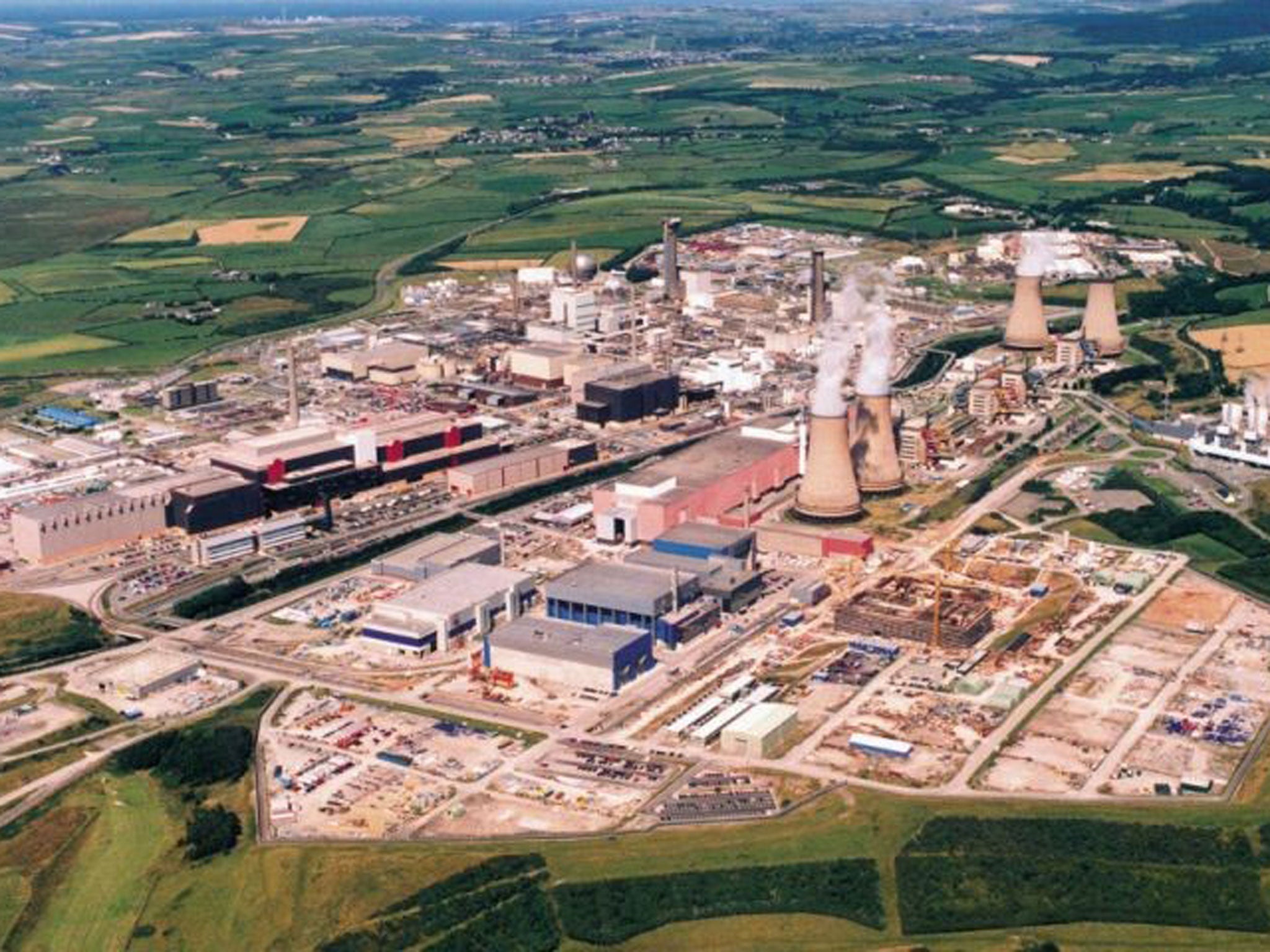Risk of nuclear leak sparks call for installation of flood defences
Long-term plan needed to protect radioactive waste at Cumbria site, says Environment Agency

Your support helps us to tell the story
From reproductive rights to climate change to Big Tech, The Independent is on the ground when the story is developing. Whether it's investigating the financials of Elon Musk's pro-Trump PAC or producing our latest documentary, 'The A Word', which shines a light on the American women fighting for reproductive rights, we know how important it is to parse out the facts from the messaging.
At such a critical moment in US history, we need reporters on the ground. Your donation allows us to keep sending journalists to speak to both sides of the story.
The Independent is trusted by Americans across the entire political spectrum. And unlike many other quality news outlets, we choose not to lock Americans out of our reporting and analysis with paywalls. We believe quality journalism should be available to everyone, paid for by those who can afford it.
Your support makes all the difference.Managers of a nuclear waste dump on the Cumbria coast have been ordered to start preparations to defend the site against floods and erosion, amid fears that radioactive material could one day leak into the sea.
Much of the waste buried in vaults and concrete trenches at the Low Level Waste Repository (LLWR) near the village of Drigg originates from one of the world's most contaminated nuclear sites, Sellafield, a few miles away. The waste dump is expected ultimately to require protective flood barriers.
Experts at the Environment Agency fear that future generations could suffer from waste with a long radioactive half-life leaking into the Irish Sea as the pace of climate change quickens and its effects become less predictable. The agency has been heavily criticised for its tardy response to the recent floods,
Campaigners seized on the warnings yesterday as proof that toxic waste should not be buried by Britain's coastline, particularly after the devastation caused this winter by seas pounding the coastline and by flooding rivers inland.
Local politicians say they have been shocked at the degree of concern expressed by agency officials about the possibility of flooding and coastal erosion at Drigg during a consultation about altering the terms of the site's environmental permit.
The agency has asked the private sector consortium led by the US engineering firm URS, which is contracted to manage the LLWR to 2018, to look into the long-term need for additional flood defences and the feasibility of building these.
It is understood that engineers from a leading UK consultant, Halcrow, have privately warned the agency that these issues must be addressed soon to prevent units holding radioactive scrap metal, plastics and protective clothing from eventually being compromised.
The facility, which also stores low-level radioactive waste from Ministry of Defence sites, hospitals and the oil industry, has been in operation since 1959.
Although the site is considered safe for the next 100 years, there is already a risk of flooding to the southern area of the site. The Environment Agency wants, as a precaution, to make sure that no action is taken at the LLWR that would prevent the future installation of flood defences. A source close to the agency said that the operators of the LLWR had been asked "to consider long-term coastal erosion at the site".
In a 19-page briefing pack given to delegates at a workshop during the consultation, which ended last week, the agency admitted that a recent study showed that "in the future there may be increased risk of flooding to some areas of the site". Ultimately, it predicted "erosion and inundation" of the Drigg dump, although the situation was unlikely to be severe for hundreds of years.
The briefing also conceded that coastal erosion was a "key issue" for the LLWR. Any permit variations allowing the site to dispose of waste currently considered safe would also have to be "demonstrated to be acceptable" against the agency's existing guidance on the erosion threat.
A workshop delegate said this weekend that the twin problems "seemed to be way up the Environment Agency's agenda" during presentations, with coastal erosion a particular concern as it is "not an exact science".
Keith Hitchen, a Conservative councillor for the borough of Copeland in Cumbria who attended the workshop, said: "My concern for this project [the LLWR] is that it goes so far into the future that there is no certainty of any predictions. How accurate are the predictions? You just have to see what's been happening around the country this winter: in securing the integrity of the site I'm not sure that there is much you can do about controlling coastal erosion."
Dr David Lowry, a member of Nuclear Waste Advisory Associates and the Department of Energy's Geological Disposal Implementation Board for Radioactive Waste, said: "One of the certainties of climate change is that the sea level will rise – therefore, developing a huge nuclear waste storage site on the coastline is a problem for future generations."
A spokesman for the Office of Nuclear Regulation, which jointly regulates the nuclear industry with the Environment Agency, said: "Site operators have arrangements in place to ensure that their sites remain in a safe condition in the event of severe weather, and to take whatever action is necessary to secure the safety of personnel on their sites."
Subscribe to Independent Premium to bookmark this article
Want to bookmark your favourite articles and stories to read or reference later? Start your Independent Premium subscription today.
Join our commenting forum
Join thought-provoking conversations, follow other Independent readers and see their replies
Comments